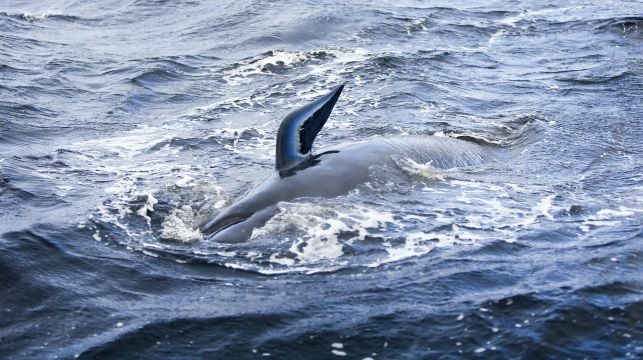Members of the public are being asked to report any sightings of a pod of 20 whales spotted in the Waterford Estuary by marine experts.
The pod of long-finned pilot whales was spotted by Wexford man, Damien Quinn who was flying a drone over the estuary at the time on Monday evening.
The Irish Whale and Dolphin Group are concerned as the most critical time for intervention is before the whales become beached and there is very little experts can do to keep them alive.
The group appealed for the public to notify them of any fresh sightings off Dunmore East and Creadan Head in Waterford, Duncannon and Arthurstown in Wexford to notify them.
The marine group said: “We are asking members of the public and local agencies to keep a close eye on the waters from any of these sites where they were seen yesterday, Dunmore East, Creadan Head, Duncannon and Arthurstown.
“As the most critical time for intervention is before they live-strand, and so if we know in advance where they are and feel that a stranding is imminent we have the option to cut them off from the shoreline and attempt to coax them to deeper and safer waters.”
They added that once whales have live-stranded, it is really “too late and in most circumstances, most will not survive due to their large size and bulk, with adult bulls weighing up to three tonnes.”
According to the IWDG the pod was in a very "tight formation and behaving in a manner suggesting they are stressed.”
The second largest of our oceanic dolphins, pilot whales are generally found in deeper waters off the continental shelf edge (around 1,000m), and sightings under these circumstances are often associated with mass live-stranding events.
IWDG have, through the Maritime Rescue Coordination Centre (MRCC) in Dublin, officially requested the assistance of the local RNLI in Dunmore East to try and encourage them back into deeper offshore water as light faded on Monday.
An initial search of the area early on Tuesday morning by a Group member resulted in no further sightings of the pod, however it is a huge area and “is certainly too large for one person to cover” the Group added.
“But for now, no news is good news and we can only hope they've made it out of the estuary into open water, where they are still a long way from their normal habitat, but at least not in any immediate danger of stranding”.







